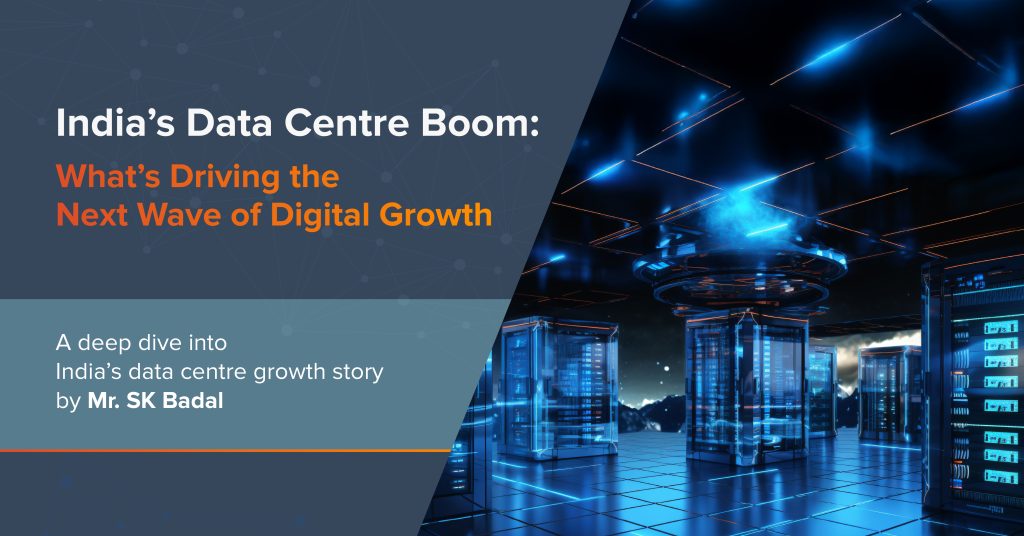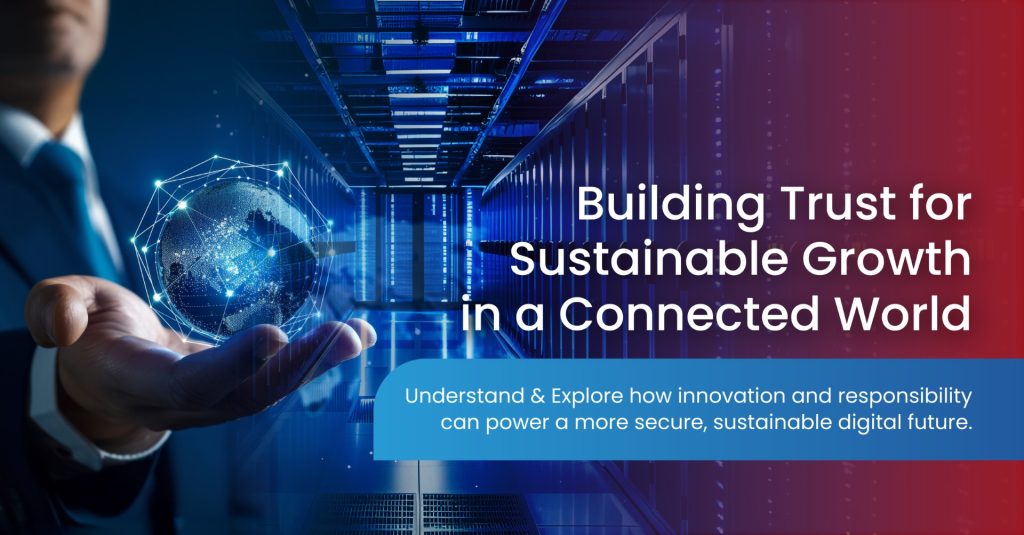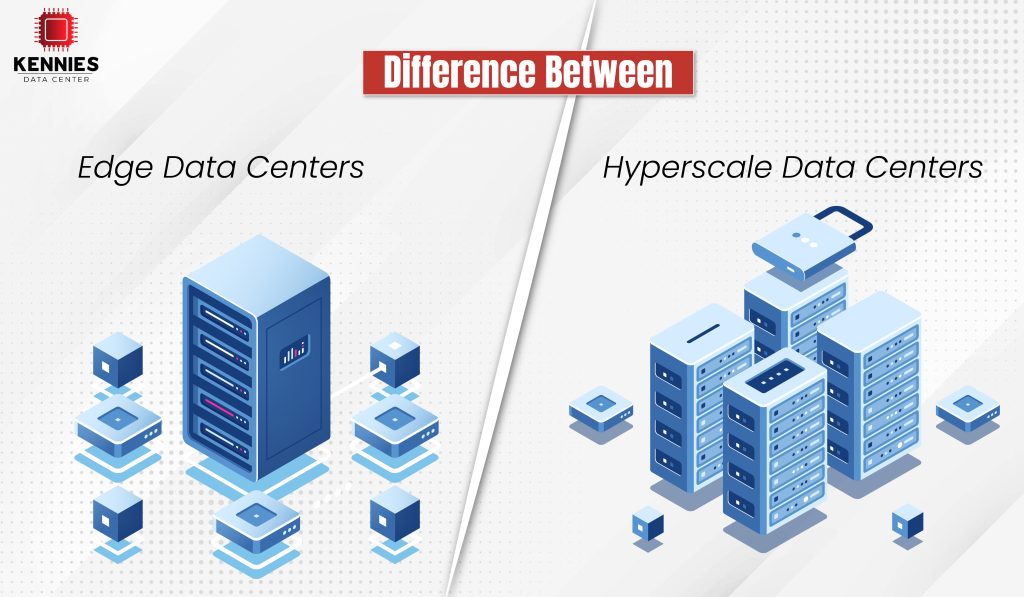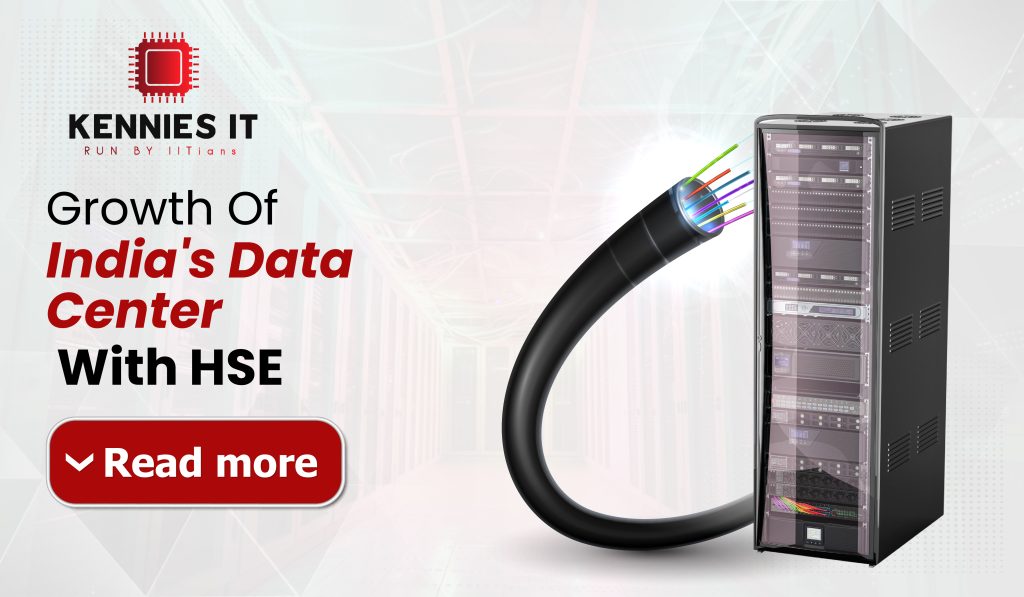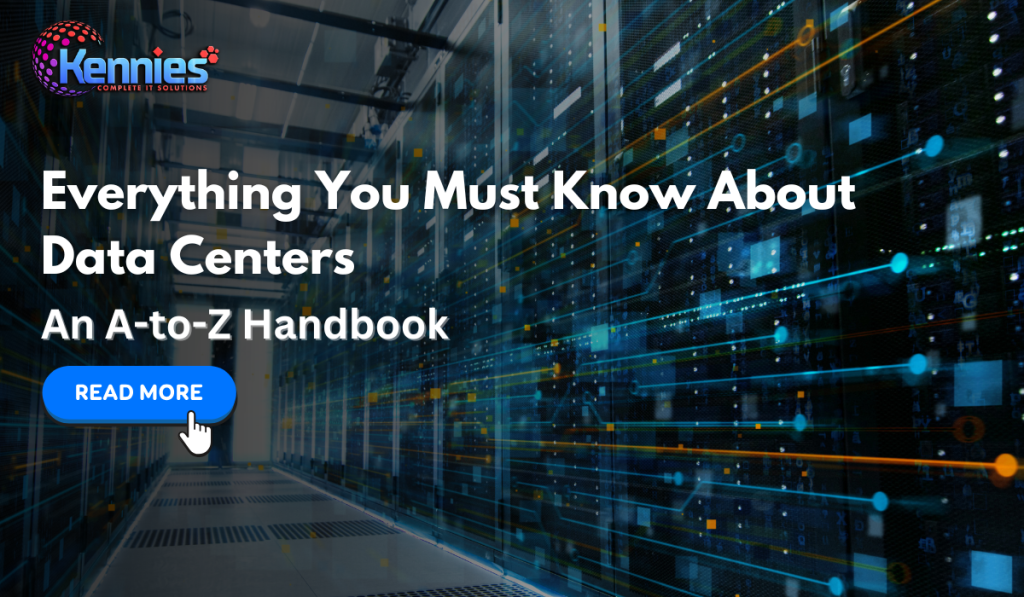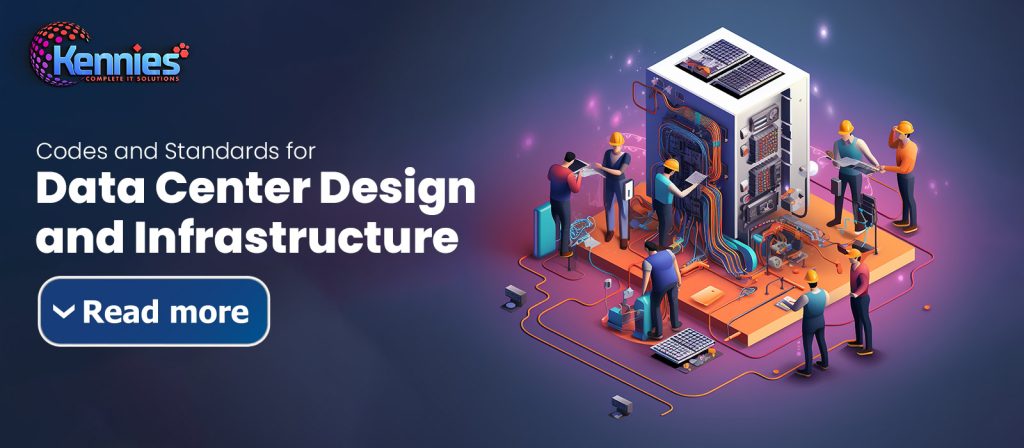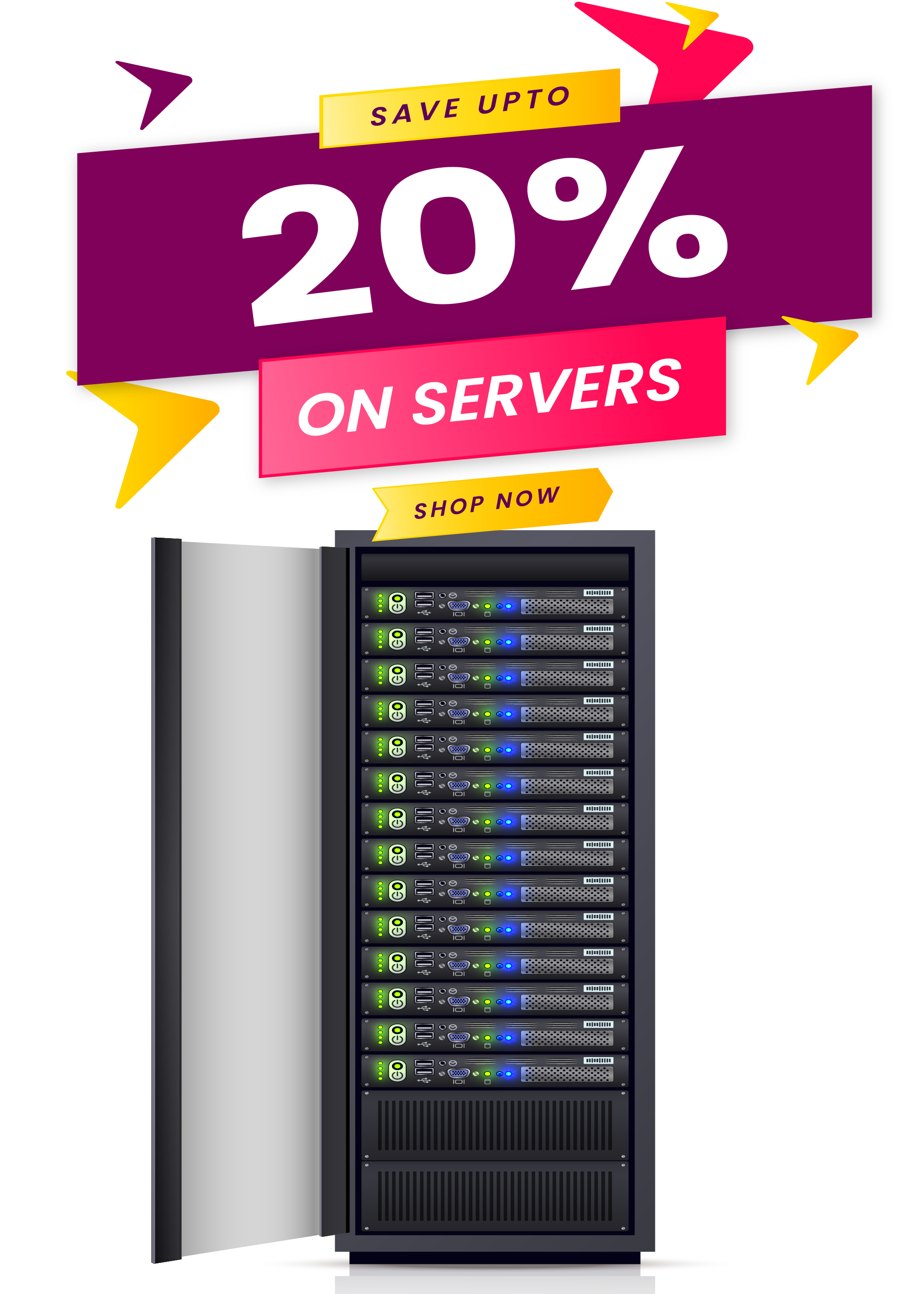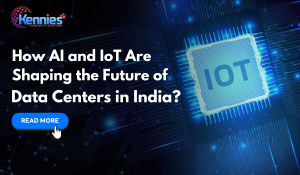
A team of young IT specialists sit together at the table in the coffee shop and actively discuss the current state of network technologies. During some Tea breaks, one of the participants talked about a friend, a startup founder, who saw their business dwindle to a halt one day as their data center was down for hours. People look serious as each person recalls certain incidents with the use of technology.
Suddenly, someone mentions the game-changer: the new data centers that are emerging in India, powered by Artificial Intelligence & Internet of Things. These data centers promised to be more than just storage facilities; they are becoming intelligent systems that could anticipate issues, optimize energy use, and secure sensitive information seamlessly.
At this level of the discussion, it is apparent that these changes are not only revolutionizing the way business is being conducted but are also laying the groundwork for the growth of innovations in the digital economy in the future. This article further advances an understanding of how AI and IoT are changing data centers in India as well as new and forthcoming technologies while outlining the trends that will drive the future.
Before delving further into the details, let us look into some recent studies and trends highlighting the overall market performance both in India and at the global level.

According to Data Bridge Market Research, Global Artificial Intelligence (AI) Infrastructure Market was valued at USD 23.50 billion in 2021 and is expected to reach USD 422.55 billion by 2029, registering a CAGR of 43.50% during the forecast period of 2022-2029.
The Growing Demand for Data Centers in India
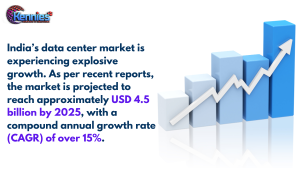
This surge is driven by several factors:
- Increased Internet Penetration: India has almost 600 million internet connections, and the figures are projected to rise.
- Mobile Device Usage: With the use of smartphones, the consumption of data has increased significantly.
- Data Generation: According to the estimates, India will become one of the largest data producers by 2025 with an expectation to generate around 40 zettabytes of data annually.
- Cloud Adoption: It is predicted that cloud service usage will increase by 30% per year, resulting in the need to build sturdy IT foundations.
What are the major challenges with Traditional Data Centers?
Despite the growth, there are several issues that act as a barrier to the efficient and effective functioning of traditional data centers. Some of them are:
-
Energy Consumption
Traditional data centers are known for their high energy consumption. According to International Energy Agency, data centers currently consume approximately one per cent of global electricity. This is particularly important in a country like India, where energy resources are fairly scarce most of the time. Cooling systems are a major user of energy and require innovative ideas to reduce costs as much as possible.
-
Scalability and Flexibility
The need for data also increases as the business excels. Nevertheless, many traditional structures lack the flexibility to scale the operations quickly. This can result in bottlenecks and extra operational expenses. Organizations once seek to allocate resources in an attempt at over-provisioning, leading to inefficiencies.
-
Security Threats
The rise of cyber threats poses significant risks to data integrity. Data centers must ensure robust security measures to protect sensitive information from breaches. There are several organizations that have experienced a data breach in the past few years, indicating the requirement for enhanced security protocols.
-
Compliance and Regulation
As data protection regulations, such as the General Data Protection Regulation and India’s upcoming data privacy laws, become more stringent, data centers must ensure compliance. This may entail monitoring and reporting, which in turn call for extensive use of resources.
How does AI help transform Data Centers?
Artificial Intelligence can be applied to the operations of a data center in order to mitigate traditional challenges. Let us discuss some of them below:
Predictive Maintenance
AI algorithms can process historical data and real-time data to note and predict the failure of the equipment involved. Using such data patterns, behaviour, and abnormality, AI helps schedule maintenance proactively, minimizing downtime.
Energy Optimization
AI-based models can keep track of energy use and then make changes that are required in real time. AI can help in managing cooling and power consumption by analysing some parameters, including temperature and load. This will help to manage the resources in an optimum way while reducing operational costs.
Automation and Operational Efficiency
AI enables automation in various operational areas, such as resource deployment and workload distribution. Besides increasing efficiency, it also minimizes the risk of human error being made in a process. Another benefit of automating tasks is the possibility of workload distribution depending on necessity.
Intelligent Resource Management
AI can then decide in which area it would be more effective to allocate resources in consideration of the real-time demand. For instance, in a crisis period, AI can reallocate resources to provide high availability and performance. This intelligent resource management becomes very important to ensure maintenance of the service level and customer satisfaction.
What is the impact of the Internet of Things (IoT) on Data Center Management?
IoT technologies are transforming data centre management by offering real-time information on data centre operations that makes them more efficient.
Real-Time Monitoring
It is possible to install IoT sensors in different parts of the data centers to track certain ambient conditions, including temperature, humidity and power consumption. This continuous monitoring allows operators to make informed decisions and maintain optimal conditions for equipment, reducing the risk of failure.
Smart Cooling Solutions
HVAC consumes a large part of the energy in data centers. Smart cooling systems can reduce this consumption based on real-time information to make efficient use of energy. For example, the use of smart cooling reduces cooling costs by 40%, inducing significant savings.
Enhanced Security Measures
IoT devices increase physical security in data centres by managing access points to avoid any unauthorised access. The use of technologies such as facial recognition and motion detection in the systems helps in providing added security measures, reducing the risk of breaches.
Asset Tracking and Management
Real-time asset tracking applying IoT technologies is also used in data centers. With RFID tags and IoT devices, operators can find out the location and status of the equipment, thus saving time on inventory and increasing operating efficiency.
Before going forward, let us look into an interesting data fact:
Based on End-user, the cloud service providers (CSPs) segment held the market with the largest revenue share of 47.4% in 2023. The rapid growth in data from social media, IoT devices, online transactions, and others provides a rich foundation for AI and machine learning models. Enterprises heavily invest in AI infrastructure to harness this data for actionable insights. AI technologies such as process automation and predictive maintenance significantly reduce costs, streamline operations, and improve efficiency, promoting the adoption of AI solutions for enterprises.
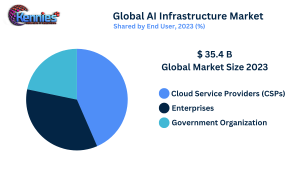
How can data centers establish the synergy between AI and IoT?
The convergence of AI and IoT creates a powerful ecosystem that enhances the performance of data centers, offering several advantages.
Advanced-Data Analytics
IoT devices are associated with the creation of immense data that can be analyzed by AI to provide insights. They enable data centres to make the right decisions based on the amount of data available to improve efficiency and performance. For instance, by using IoT sensors, AI can figure out when precisely a particular resource will be utilized.
Predictive Insights for Operational Efficiency
Applying both AI and IoT makes it possible for data centers to predict problems or even design their operations. For example, predictive analytics can estimate equipment failure, therefore allowing preventive measures to be taken.
Improved Customer Experience
Improved efficiency and availability of data centers will ensure that high-quality services are delivered. The integration of AI and IoT response times and resource allocation improve, consequently, customer satisfaction increases.
Enhanced Security Protocols
AI can also gain the capability of processing data from devices to identify unusual occurrences or risky scenarios. Data centers could notice unusual real-time patterns and impose countermeasures, improving security tremendously.
Future Trends Shaping Data Centers in India
As India accelerates its journey towards digitalization, several factors are emerging which will define the future of data centers.
Edge Computing
The rise of IoT and the demand for low latency makes edge computing an attractive option. One of the biggest advantages of data centers is the ability to process data closer to the source in order to decrease latency. Edge computing enables real-time data processing, which is essential for applications such as autonomous vehicles and smart cities.
Focus on Sustainability
With increasing concerns about environmental impact, data centers are adopting greener technologies. AI and IoT can help monitor and optimize energy consumption, enabling data centers to reduce their carbon footprint. Many data centers in India, including Data Center In Noida, are now pursuing renewable energy sources and employing energy-efficient technologies.
Cloud-Native Architectures
Due to the transition towards cloud-native applications, data centers are changing as we speak. To make flexible, highly scalable infrastructures that come in handy to support dynamic workloads, integration of AI IoT is going to play a pivotal role. Such a transition enables application deployment to occur rapidly and proficiently to meet the client’s needs in the process.
Data Privacy and Compliance
As the data protection legislation becomes more stringent, data centers will have to factor in compliance. AI and IoT can also help in monitoring and reporting in real-time as organizations give proper obeyance to set regulations and security measures.
Conclusion
To sum up, it can be said that the combination of AI and IoT is changing the face of data centers in India, positively enhancing efficiency, security, and sustainability. Organizations are shifting towards the use of digital structures. Thus, the adoption of these technologies remains vital for staying in the market. With the use of AI, the data center expedites maintenance and processes real-time analysis, thus cutting operational expenses and time. At the same time, IoT devices provide valuable information for real-time adjustments to enhance performance and encourage sustainable use.
Moreover, this technological integration is critical and necessary for organizations that want to achieve sustainable competitive advantage in the contemporary environment. Such innovations, when prioritized, can help business organizations to thrive and adapt well in the digital age. As India moves solidly into the digital era, there is no doubt that the future of data centers will be defined by the seamless integration of AI and IoT.


